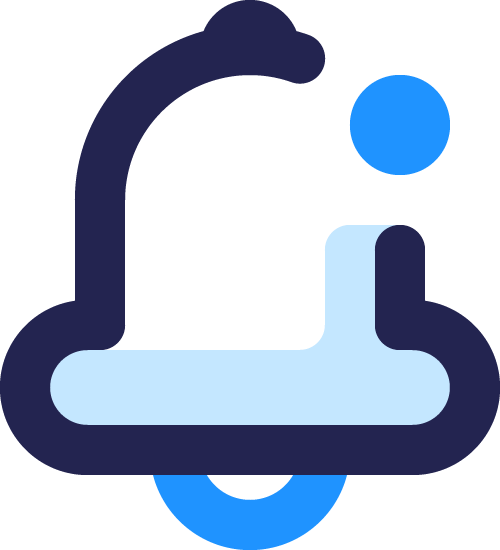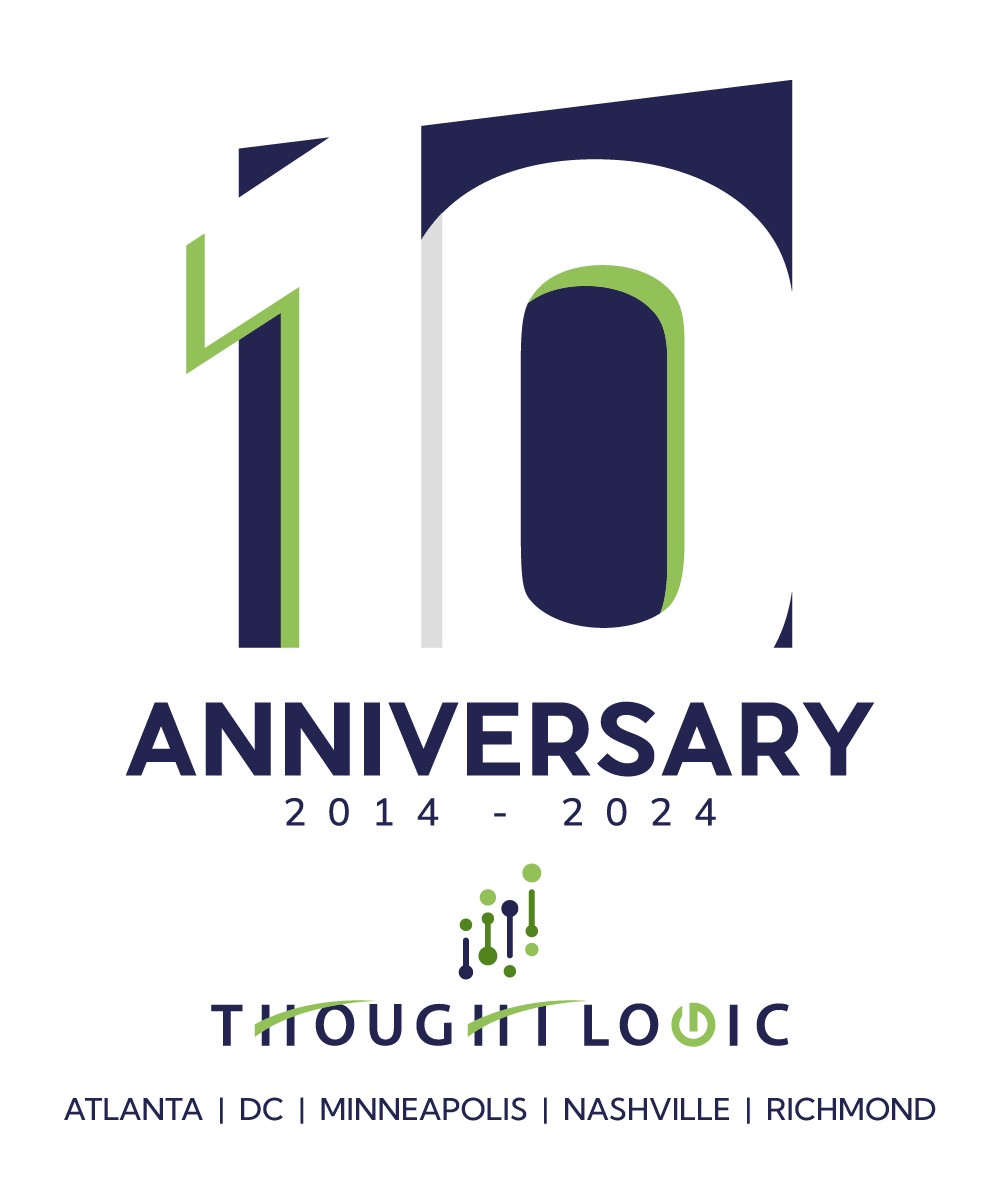Welcome To The Generative AI Hype Cycle, Let’s Reduce The Noise For Business
In an increasingly digitized world, understanding AI isn’t just a nice-to-have – it’s business critical. Let’s demystify it and explore the possibilities.
In the span of nine days, from March 14 to March 23, 2023, the tech world experienced its version of March Madness. The stakes? Much higher than a basketball tournament bracket and a few dollars. At Thought Logic, preparing for an internal lunch and learn presentation on generative AI meant almost hourly content updates due to rapid announcements from industry giants like Open AI, Microsoft, Google, Baidu, and Adobe. Speaking of dollars, McKinsey estimates that generative AI could inject $2.6 to $4.4 trillion annually into the global economy, based on their analysis of dozens of business use cases.
Generative AI isn’t merely changing work—it’s reshaping strategy, competition, and innovation. In a world powered by digital intelligence, understanding this technology’s dynamics is a business imperative. However, as we assess the potential of generative AI, it’s equally crucial to acknowledge the inherent risks. Questions of data privacy, ethical use, and the need for responsible deployment loom large, indicating that the path to AI integration is as much about vigilance as it is about innovation.
This article aims to demystify what this means for business leaders by sharing use cases, discussing compelling industry examples, examining future workforce considerations, and sharing enterprise challenges and potential regulations for responsible implementation.
What does this mean for Business?
Objectively speaking, AI use in business has been around for years, from customer service chatbots, interactive voice response systems, recommendations and auto-complete features on search engines and apps, dynamic pricing tools, to autonomous mobility features. These examples fall under the category of “narrow” AI, which simply means that these tools have been trained to perform specific tasks.
Generative AI is another subcategory of AI, and as the name implies, it can generate multi-modal content based on various inputs, including human language. At this point, Generative AI is narrower than what some observers may hyperbolize, yet within its existing limitations, we’re experiencing an inflection point that has opened up the possibility for nascent and exciting use cases that should be in many organizations’ consideration. Among them are the following:

Marketing and Sales
- AI-aided Customer Service, Sales, and Marketing (chatbots, upsell assistance, sales and marketing communications)
- Targeted and dynamic marketing strategies and pricing hyper-targeting
- Personalized ads and product recommendations based on AI generated customer insights
- Retail Loss Prevention
- Predictive demand planning and supply chain optimization

Information Technology
- Faster, more efficient coding: write, debug, review
- Generate testing scenarios and data
- Data cleanup and structuring
- Wider release of chatbots for self-service

Human Capital
- Talent acquisition: job descriptions, applicant screening, interview prep, and onboarding automation
- Streamlined L&D content generation, delivery, and measurements
- Faster, more efficient technical upskilling
- Employee sentiment analyses
- Enhanced performance management processes

Finance and Accounting
- KPI definition and monitoring
- FP&A forecasting
- Drafting of Financial Statements
- Investment decision making support
- Automation of invoice generation

Other
(across all functions and business pain points)
- More efficient analysis, insights, and visualization of large data sets and documentation (including contracts)
- General workforce productivity, accelerating and automating tasks
- Meeting readiness: content summarization and creation for presentations, predicting questions and rebuttals
- Real-time risk management, fraud detection, and mitigation strategies
- Process optimization
The larger picture is that generative AI can lead to increased creativity, productivity, and optimized deployment of resources by automating mundane tasks that allow the workforce to focus on more strategic or complex work.
A Few Sectors Already Impacted:
With the spread of ChatGPT last winter, immediate potential was apparent in areas like advertising, marketing, education, and arts. More broadly, sectors that rely on knowledge work performed by a highly paid and highly educated workforce could face the most disruption in future years, including productivity gains, workforce composition evolution, and competitive advantages to organizations that lead in embracing these technologies.
In healthcare, where prior attempts of incorporating AI failed to produce the desired results, Microsoft (through their Open AI partnership) and Google are racing to have hospitals from UC San Diego to the Mayo Clinic test and adopt their generative AI products. The benefits for this type of use case are various: easing the administrative burden of practitioners and staff, organizing vast amounts of unstructured data, and triaging patient conditions, among others.
Advertising giant WPP, who has leveraged other forms of AI in the past, announced in Q2 a partnership with NVIDIA. Their exclusive platform will allow WPP to create marketing campaigns faster, with greater target customer and channel personalization, at scale, and with a lower cost of production. This quote by WPP’s CTO sums it well: “We are able to use generative AI to now personalize and customize advertising to every environment in the world: you can create 10,000 versions within a couple of minutes.”
Immediate Impact to the Future of Labor and Work
Revisiting the prior WPP example, when questioned about the fears of AI replacing workers in the industry, chief executive Mark Read said: “It’s much easier to identify the jobs that AI will disrupt than it is to identify the jobs that AI will create.”
Where robotics, automation, and higher interest rates impacted blue-collar professions in past decades, the confluence of the rise of generative AI and the current economic environment has the potential to transform white-collar, middle-management work. To reiterate, we believe the short-term impacts will center around productivity gains as an assistance to humans.
At an organizational level, our colleagues Rob Gee and Maria Connor previously noted that organizations that do not confront these technological advances and upskill their employees accordingly will suffer from a talent drain favoring forward-thinking companies. At the individual level, a recent BCG survey of 13,000 employees across 18 countries found that employees at the higher levels of companies were using Generative AI tools more often and felt more optimistic about them than frontline employees, while the vast majority of respondents said they needed upskilling and very few frontline workers reported receiving any training.
Initial steps to prepare your workforce – and to attract the next generation of talent – are to create internal guardrails for the safe usage of these tools, experimentation environments, reward early adopters and promoters within the organization, and create a culture of intellectual curiosity. Shell, as one example, has expanded an existing relationship with Udacity to upskill a cohort of about 2,000 employees who have expressed an interest in AI-related coursework on a voluntary basis.
Enterprise Challenges to be Aware Of
A small number of companies are already exploring material usage of generative AI for their respective industries and contexts. Yet most companies are in a stage where some of their employees may be using it for their day-to-day work, without an enterprise level strategy of how to best harness these capabilities. Navigating this AI landscape can feel complex, with challenges emerging from various dimensions. A few enterprise-wide considerations to examine across these dimensions:
Strategy and Talent:
- Harmonizing AI strategies across functions and business units into a centralized body
- Addressing talent shortages and upskilling the workforce for AI
Risk Management:
- Ensuring information security and data privacy
- Navigating AI ethics and managing over-reliance on AI outputs, with human workers playing an oversight role
Regulatory Considerations in the E.U., U.S., and beyond:
- Labeling of content produced by AI
- Transparency on how the models are trained (for example: whose data and proprietary content is being leveraged; human worker deployment in the training process)
- Guardrails on targeted advertising and privacy
Adoption and Implementation:
- Driving enterprise-wide adoption of AI
- Assessing technical and financial hurdles in AI implementation
Company and industry context also plays a role in your organization’s readiness and potential for desired outcomes. Be mindful of internal data availability and quality to train and test models, process maturity, change acceptance, and the existing company culture.
In Closing
As we navigate this next step in AI evolution, remember to differentiate between hype and reality. AI has been prevalent in business in years past, the past six months have opened the possibilities for expanded and intriguing use cases. However, senior leaders need to ask themselves: What is our AI strategy? Do we have the right processes, people, and technology to maximize its potential? Without a doubt, the adoption and strategic application of AI is not just an option for businesses today—it’s an imperative for remaining competitive and be future-proof.
At Thought Logic, we are committed to guiding you through this transformative journey. We can help you understand, strategize, and effectively apply AI in your organization to drive efficiency, innovation, and growth. We are eager to help you turn this technological challenge into a significant opportunity.

About Digital Enablement
Thought Logic’s Digital Enablement smartSolution provides full-circle capabilities that help keep organizations keep ahead of digital change.

Sign up to receive future Insights in your email box.
Never miss an update.









